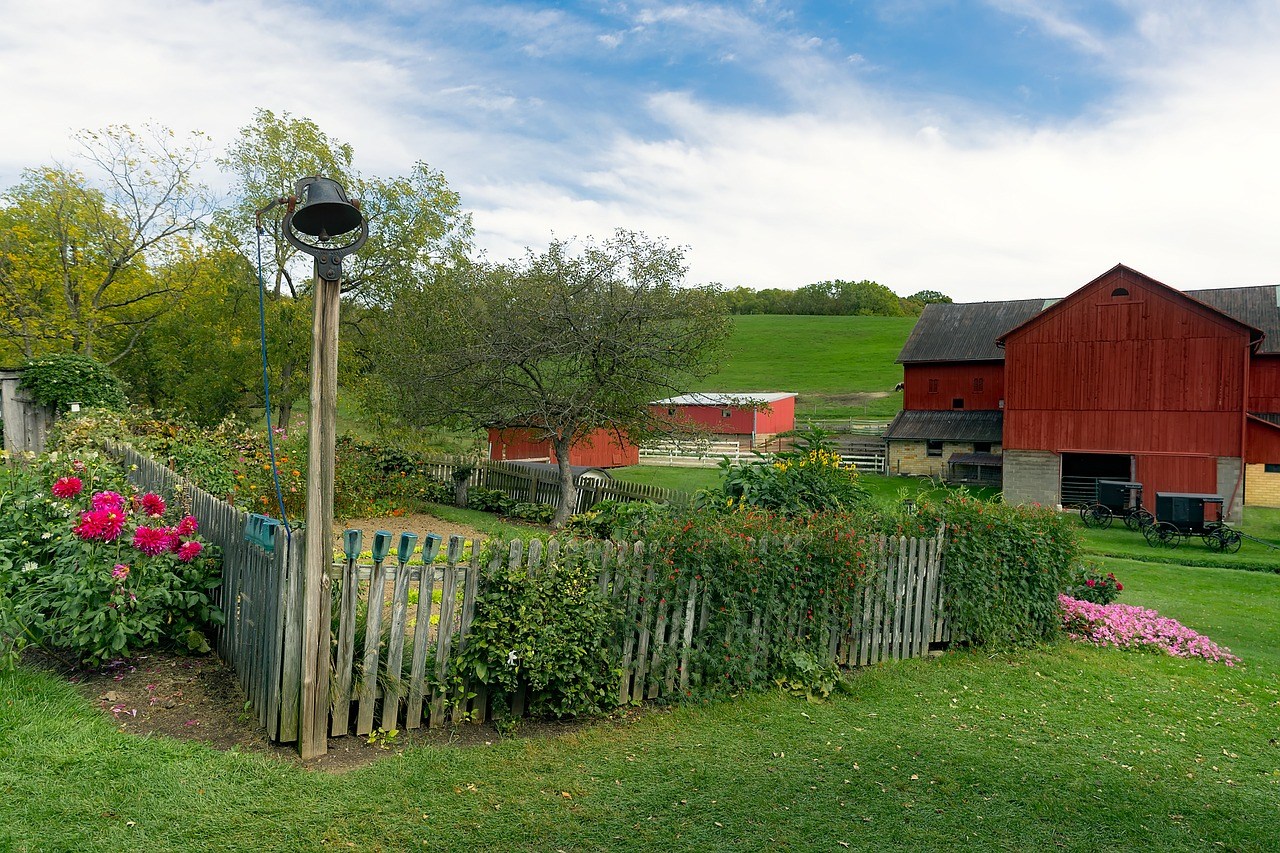How to Sew by Hand
Many of us suffered through mandatory middle school home economics class – and likely should have paid better attention. The Amish teach simple sewing to children when they are barely more than toddlers. Learning how to make your own fabric, thread, patterns and clothing is not only a money-saver for off-grid families, but a necessity following a disaster.
Not surprisingly, the Amish keep it simple when it comes to clothing. Learning how to sew-in zippers is not necessary. The sturdy garments made by the Amish are secured with thick buttons, hook-an-eye fasteners, and Velcro.
How to Farm Without Machines
Amish farms most commonly grow corn, wheat, hay, soybeans, tobacco, tomatoes, barley, potatoes, green beans and grasses for grazing livestock. The level of self-sufficiency found on an Amish farm would likely impress even a seasoned homesteader. The Amish do not smoke, but do sell tobacco and other excess crops to non-community members. Farm work on an Amish farm is done with horse-drawn equipment only.
The wagons used have durable metal wheels and not tires made of rubber. One Amish farmer does not usually possess all the skills necessary to make wheels, shoe horses, grow crops, make furniture, etc., but he does network closely with other members of the community to ensure that none of the necessary items will ever be in short supply.
An Amish community resembles a very well-trained and close-knit mutual assistance group. When a barn needs raised, it is framed within a day. A regime of crop rotation is strictly followed on an Amish farm and no season is wasted – replenishing empty ground during the winter is key to developing nutrient-rich ground in the spring.

Amish Farming Task Schedule
- In April, the Amish sow oats and plant corn. Tomato seeds are also moved outdoors from the greenhouse in many locations.
- In May, the horses and cows are munching on well-maintained pasture, and late-harvest corn is planted.
- In June, it is hay-making time. Strawberries are also preserved and turned into a plethora of sweet delights to be enjoyed by the family and sold at roadside stands.
- July is an extremely busy month on an Amish farm. The second cutting of hay occurs, threshing must be done, honey is removed from supers, apple starts are transplanted, and sweet blackberries and raspberries are picked.
- During August, silos must be refilled before the weather turns cold and sowing of fall wheat must be completed.
- In October, it is cider-making and late-corn harvesting time.
How to Take Advantage of Off-Grid Power
There are multiple varieties of Amish. The Old Order is far more strict when it comes to the use of any type of power. The Amish community in my area and in “Ohio Amish country” utilize both gas and solar power. Amish do known how to milk cows by hand, but are permitted to use gas-powered milkers, barn fans, and propane appliances.
If fuel suddenly became unavailable, as it did during the summer storm in my area, the Amish would still be able to go about their chores and operate their businesses. Some tasks would just take a little bit longer.
Bottled gas is often used to power water heaters, stoves and refrigerators. Gas-pressured lamps and lanterns – and even rustic lantern chandeliers — can be used to light homes, businesses, and barns. We recently visited a major supplier of propane refrigerators and stoves while in Ohio Amish country. The prices were not much higher than the modern appliances you can buy at the local big box store and offer a great off-the-grid living alternative. Solar panels and solar generators are also widely used by some Amish communities. Some Amish have jokingly called their solar power usage as “connecting to God’s grid.”
How to Identify Plants and Trees
The Amish understand the environment which surrounds their home just as well as America’s original pioneers. They can easily rattle off details about the types of grasses which will produce specific types of crops and livestock feed. If their food ever ran out, which would require a long-term disaster of epic proportion, the Amish can easily walk into the woods and quickly identify which berries and other wild-growing items are safe to eat.
Know your wood! My husband embarked on this type of training with me, and I felt quite proud to show of my wood identification skills when talking with members of the Amish community. From a young age, the Amish are taught to how to identify and understand why different types of wood are good for fires, cooking and building.
How to Use Hand Tools
The Amish take extremely good care of their tools. Think how closely you guarded that one special present you opened on Christmas morning as a child, and you get the idea how much the Amish care for their wood-hand planers, leather punches, blacksmithing equipment, horse tack, generators, and hand-powered farming implements. Investing in, and learning how to use hand tools was highly recommended by my Amish friends. Building and repairing what you need on the homestead or during a disaster without power is essential.

Horses are considered equipment on an Amish farm. But this does not mean the animals are mistreated. Amish children learn how to not just ride and care for horses by the age of five, but can also saddle, harness and cart the ponies and miniature horses used during their training.
Source: concerneduspatriots.com


1 thought on “The 5 Secrets Of Amish Farmers”
Mr. Paul
(April 28, 2019 - 5:48 pm)Well i disagree, not many people have gone through home economic class. That’s the whole issue. Schools are not teaching the children practical homemaking skills as they once did. From cooking, gardening, budgeting and general homemaking skills. And yes, i mean for boys too. The rest of the article was an interesting read. Although not really practical for the majority of us not living a farmers life.